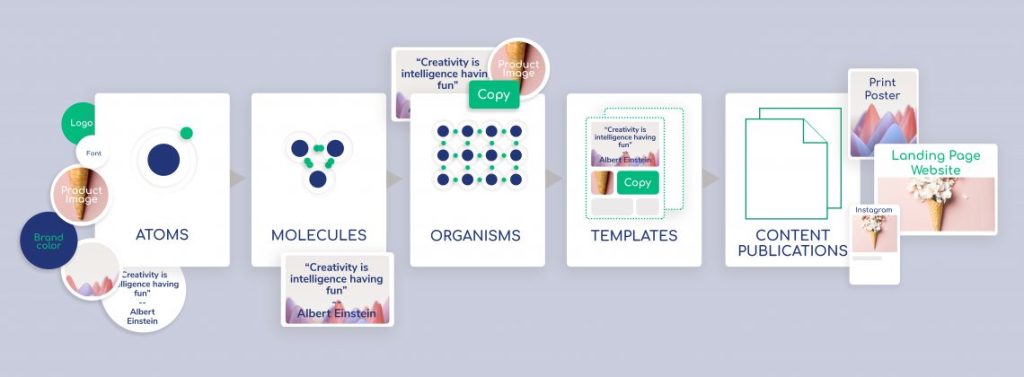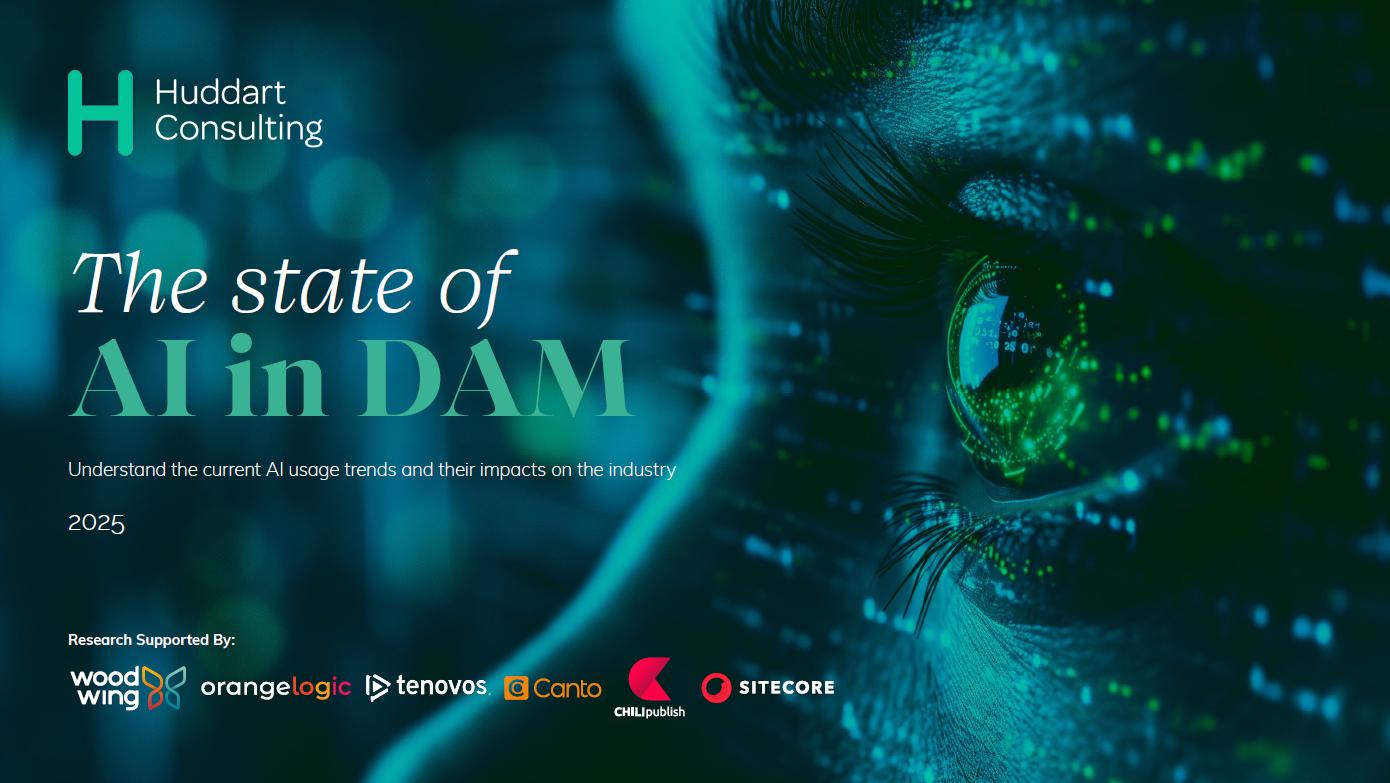😓It’s been a tough year!
How are your marketing efforts coping?
A mantra I often hear from branding and marketing teams is COPE – “Create Once, Publish Everywhere.” The idea being that to make the most of your content, deliver your content across your omni-channel platforms and to each of your audiences. Easier said than done!
With the insane amount of content and channels we use to reach our audiences these days, there are few, if any, teams that will have enough resource to churn out content quickly or flexibly enough to meet your customer’s expectations.
But with COPE, you can reach more of your audience without stretching your resources to their breaking point.
Consistent messaging and customer experience across channels, delivered with speed and efficiency. Sounds great, doesn’t it?
🤷🏽But how do you COPE?
In 2016, Brad Frost published a book called Atomic Design. His original principle related to breaking down website and product design into smaller components or “atoms” and then building the design using these building blocks (like legos).
The concept was quickly applied to other areas of business and marketing. Atomic content (sometimes referred to as modular content) is a similar approach where “structured contents have been broken down into their smallest constituent parts, ready to be reused in larger contexts.”
The idea is that you can take an eBook and turn that 1 piece of content into:
1. a whitepaper
2. 5 blog posts
3. a landing page
4. content for your personalized weekly newsletter
5. and a webinar
And in turn, you can then repurpose clips from that webinar for a:
6. podcast
7. a social media advert with sound-bites
8. a response to a chatbot query
🤔Design Thinking at the Atomic Level
What is your atomic unit of content? At the Victoria & Albert Museum, the museum object is the atomic unit of content from which all other content is connected and related. The user journey is centered around the museum object and the history, information, and even physical experience of that object.
If you work for a CPG, retail, or even a healthcare brand, your atomic unit of content may be each product.
Or perhaps if you are doing pure content marketing, your campaigns will be based around the “atoms” or raw materials that are used to create your campaigns. Be they:
- stock images
- brand images
- copy
- headlines
- video footage
- graphics
- fonts
- colors
- or logos

🧩What’s DAM got to do with it?
The key to ensuring you get the highest return-on-investment (ROI) from your modular content is to make these assets accessible centrally. Through modern marketing technologies, your staff and agencies will have direct, immediate access to pre-approved modular content.
One such technology is a digital asset management (DAM) system, which enables you to centralize and collaborate on modular content to ensure that all of your building blocks are in one place, easily searchable, and each piece of modular content has clear instructions on how to use it. Additionally, if you are licensing much of your atomic content from stock content providers such as Getty, Adobe Stock, and Shutterstock, you might also want to consider using an Enterprise Content Buying platform, like this solution offered by Smint.io, to centralize your atomic content earlier in the content supply chain.
The DAM may hold the modular components (such as images, voice-over audio, bits of copy, video clips, illustrations, animations, etc.) which can be used to create multiple variations of marketing collateral to be published automatically to the matching digital and print channels.
Pharmaceutical company, Merck, were able to implement a modern, cloud-based DAM solution which they use to create modular content, collaborate, and deliver the components. They created an initial library of pre-approved modules and made these valuable assets accessible to key stakeholders globally.
“DAM underpins any effective modular content strategy.”
– Bernard Madden, director of content capabilities, Global Marketing Operations at Merck
Similarly, German retailer, REWE Group were able to grow asset reuse by more than 30% simply by centralizing their licensed atomic content through the Smint.io Enterprise Content Buying Platform.
👷🏽Break it down to build it up again…
Once broken down to the atomic level and stored centrally in your DAM system, you now have the ability to automate content creation by setting up business rules for your marketing automation tools to populate designs (think e-newsletter, landing page, or poster) by pulling the right core content components from your DAM.
…for Dynamic Content
Modular content can be structured, curated, and contextualized according to audience, channel, regional market and use case into what’s called Intelligent Content. So now, when you are building your next e-newsletter for your summer campaign and you need 5 different versions personalized to the recipient’s gender and preferences, you can automate the process.
💵Benefits and Return-on-Investment of Modular Content
A modular, component-driven approach can provide some incredible benefits for your brand. Based on how you measure these benefits against your key performance indicators, you can then calculate the Return on Investment.
1. Consistency across brands and channels – your customers will often have multiple touch points with your brand (perhaps on a social media channel, website, email discount code, app…you get the idea) and you will want to ensure that the message, visual brand identity, and experience is consistent across each of these channels. A jarring experience can scare away or confuse customers.
Measure:
- Increased global consistency and local relevance with modular content
- Use of new digital channels (how’s that TikTok strategy going?)
- The reduction in number of review and approval cycles, particularly in regulated industries
2. Efficiency and Cost Savings – no need for you to re-create content for each channel over and over again. With your centralized DAM system, you’ll be able to find and repurpose modular content from one place and quickly use each component on your channels. By integrating your modules into channel-specific template builders, you can automatically create finalized content without extra manual effort.
Measure:
- Speed-to-market for your content
- Improved content reuse and sharing across markets (as well as associated reduction of agency costs) – check out this ROI calculator for licensed atomic content
- The time saved by creatives who can now focus on content creation and quality instead of small edits or coordinating collaboration
3. Identify and Personalize Approved Modules for Local Markets – need a Spanish version of your asset for a regulated, local market? No sweat! With pre-approved, intelligent modular content in multiple language translations and visual content specified for each region, you’ll be able to automate the creation of content that is right for your local audience.
Measure:
- Innovations which were enabled by modular content such as dynamic content and automated templating
- The speed of expanding into new markets with localized content
- A/B testing speed and value of optimizing the customer experience
So, I ask you once again…
😊How are your marketing efforts coping with more channels and more content?
How can you “Create Once, Publish Everywhere” (COPE) with the same resources you already have and get a good return-on-investment?
The best solution to this problem that has been presented this decade is atomic content. This simple approach of creating and repurposing small blocks of modular content, ensures that content is flexible for various channels, yet still maintains consistency in the branded customer experience. By creating a streamlined process for staff members at all levels to access, collaborate and repurpose atomic content through centralized tools, your brand can continue to scale its omnichannel content delivery.
We are all trying to keep up with the explosive growth of channels that customers use to engage with our brands, and here is a sustainable way of doing just that without burning out or drowning in the flood of content.
